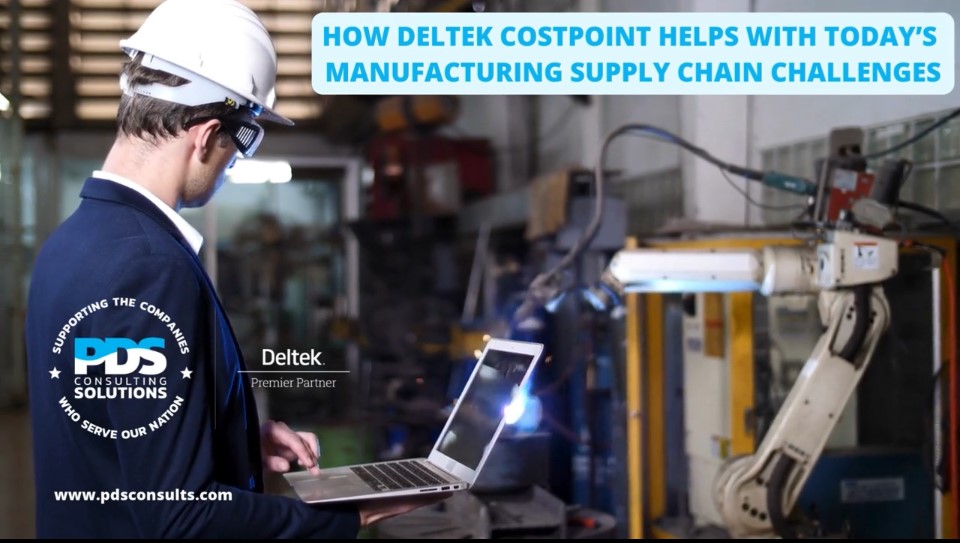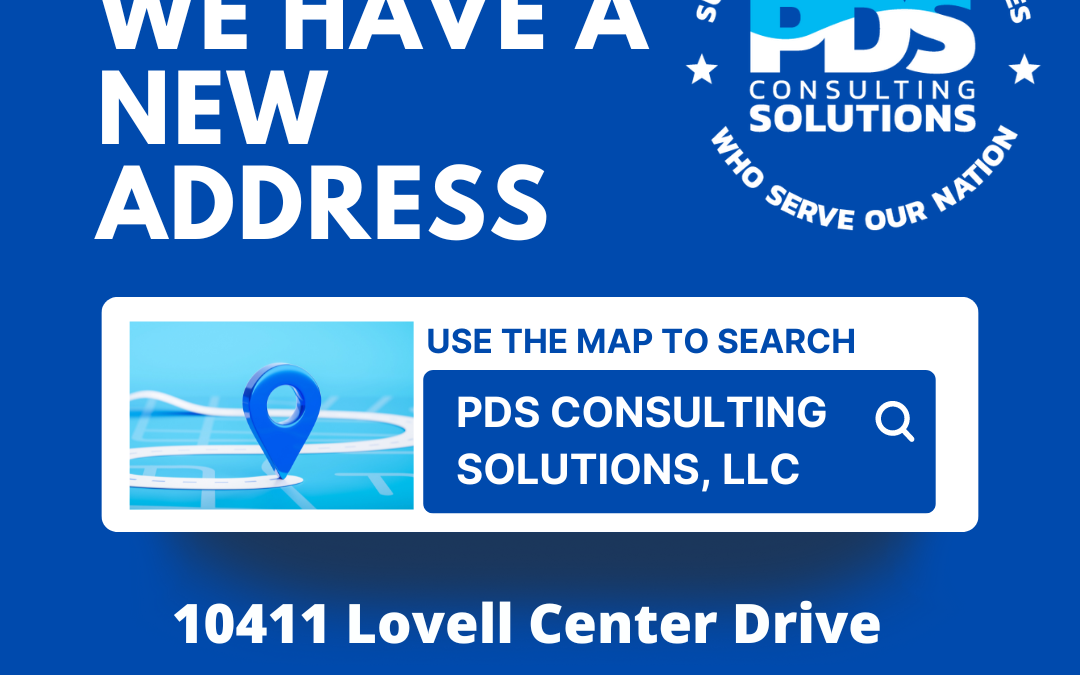
Nov 5, 2024
NEW BLOG POST: COMPLIANCE / FINANCE
Finance teams are increasingly turning to technology to enhance financial performance. Despite some financial metrics, such as growth rates and P/L margins, softening this year compared to 2022’s historic highs, the results still outperform most years recorded by the Clarity survey. As finance professionals focus on managing costs and profitability, they also face talent pressures that impact the government contracting industry. Fortunately, technology serves as a force multiplier, with tools like AI helping reduce costs and allowing personnel to concentrate on more strategic tasks.
In the government contracting industry, technology such as Enterprise Resource Planning (ERP) systems can significantly mitigate and facilitate compliance issues. ERP systems streamline processes and provide comprehensive oversight, ensuring that financial and operational activities align with regulatory requirements. These systems offer integrated solutions for tracking expenses, managing contracts, and maintaining detailed records, which are essential for compliance with government contracts. By automating compliance-related tasks, ERP systems reduce the risk of human error, improve accuracy, and ensure that companies can quickly adapt to new regulations.
High performers in the financial sector are not only focusing on talent acquisition and retention but also utilizing technology to manage audits and compliance efficiently. The systematic approach to audits, supported by dedicated resources, reflects a broader trend of leveraging technology to optimize financial and operational functions. This strategy allows companies to remain agile and competitive, even as they face challenges related to talent and compliance in the complex landscape of government contracting.
Overall, high-performing financial teams in the government contracting industry demonstrate how technology, particularly ERP systems, can address compliance issues effectively while also optimizing other critical business functions. By staying ahead of the curve and embracing digital transformation, these teams set a benchmark for operational excellence and regulatory adherence.
Why Deltek Costpoint™ is the BEST ERP for compliance and DoD requirements
Compliance with Government Regulations: Costpoint™ is specifically designed to help government contractors meet stringent regulatory requirements. It ensures compliance with standards such as FAR (Federal Acquisition Regulation), DFARS (Defense Federal Acquisition Regulation Supplement), and CAS (Cost Accounting Standards), making it easier for contractors to adhere to government mandates.
Project Management: Costpoint™ offers comprehensive project management capabilities that are essential for government contractors. It integrates project planning, budgeting, scheduling, and resource management, ensuring that projects are delivered on time and within budget while meeting all contractual requirements.
Accurate Cost Accounting: Costpoint™ provides robust cost accounting features that allow government contractors to track and manage costs accurately. Its detailed cost reporting and allocation capabilities ensure precise cost control, which is critical for government contracts that require meticulous cost tracking and auditing.
Enhanced Security and Data Protection: Government contractors handle sensitive information, and Costpoint™ addresses this need with advanced security features. It offers strong data protection measures, including encryption, access controls, and compliance with cybersecurity standards such as NIST (National Institute of Standards and Technology).
Scalability and Flexibility: Costpoint™ is highly scalable and can accommodate the growth and evolving needs of government contractors. Its flexible architecture allows for customization to meet specific contract requirements, making it suitable for contractors of all sizes, from small businesses to large enterprises.

Oct 3, 2024
MANUFACTURING/SUPPLY CHAIN
The manufacturing sector is experiencing significant technological advancements, with automation and artificial intelligence (AI) being key tools to address workforce turnover while maintaining quality standards. One of the industry’s primary concerns remains the supply chain, but an even greater challenge is replacing experienced workers who are aging out of the workforce. Although manufacturers have identified technological initiatives and other strategies to manage these issues, the follow-through to invest in and scale these systems remains a significant obstacle. In 2024, talent acquisition and quality control remain the top challenges, with talent attraction and retention being the most critical issue for this year, cited by 33% of Clarity Report respondents. This challenge is particularly acute for small businesses, with 60% highlighting it as their number one concern. The transition to a new workforce must be managed carefully, as maintaining high quality standards is crucial.
A new challenge identified this year is managing legacy systems, which ranks third overall. The difficulties of securing these systems, high maintenance costs, and loss of domain knowledge as experienced employees retire are significant issues. Legacy systems also hinder the incorporation of automation, a clear priority for manufacturers. Automation is increasingly seen as a solution to talent and quality control challenges, with 44% of respondents selecting it as a strategy for the upcoming year, rising to 60% among small businesses, which have a large gap to fill (only 14% automated versus 49% overall).
Implementing automation is complex, particularly for small and mid-size businesses that struggle with technology acceptance and the significant cost investments required. In contrast, the largest manufacturers cite scalability as their main challenge in building on their more advanced automated processes. Beyond automation, AI and machine learning (ML) are also key technological focuses. Implementation of AI/ML systems was the top digital transformation initiative, selected by 41% of respondents, up from 29% last year. Deploying more robotic automation tied for second among digital transformation initiatives at 36%, alongside process reengineering, a perennial focus for optimizing manufacturing and other business functions.
High-performing manufacturers, defined by the highest profit/loss margins, are leading the way in automation. Nearly all of this group (89%) report having automated operations, compared to less than half of the other respondents (43%). High performers view automation as a solution to talent challenges, with only 22% citing talent attraction and retention as a top challenge, compared to 35% of other respondents. Additionally, 56% of high performers leverage automation to address their challenges, versus 42% of the broader group. Their key performance indicators (KPIs) also differ, with only 11% tracking capacity utilization, the top KPI overall, while more than half of high performers (56%) track inventory turns.
Manufacturers are increasingly adopting technology to tackle talent shortages and quality challenges. The continuous turnover in the workforce has left manufacturers struggling to replace their most experienced workers. In response, automation, AI, and other technological strategies are becoming central. However, these innovations also bring unique challenges that manufacturers must navigate.
How does Costpoint™ help?
Streamlined Supply Chain Management: Costpoint™ enables aerospace and defense contractors to effectively manage complex supply chains by integrating procurement, inventory, and logistics processes. This integration ensures real-time visibility and coordination across the entire supply chain, reducing delays and improving efficiency.
Advanced Inventory Control: Costpoint™ provides robust inventory management capabilities that are critical for aerospace and defense contractors. It helps track inventory levels, manage stock locations, and monitor usage rates, ensuring that critical components are available when needed while minimizing excess inventory costs.
Automation with TIP SFE: By leveraging the Technology Integration Platform (TIP) with Shop Floor Execution (SFE), Costpoint™ automates various manufacturing and supply chain processes. This automation reduces manual effort, minimizes errors, and accelerates production cycles, leading to increased productivity and cost savings.
Enhanced Supplier Collaboration: Costpoint™ facilitates better collaboration with suppliers through its supplier management features. It allows contractors to manage supplier relationships, evaluate performance, and streamline communication, ensuring that suppliers meet quality standards and delivery schedules.
Real-time Analytics and Reporting: Costpoint™ offers real-time analytics and reporting tools that provide aerospace and defense contractors with critical insights into their supply chain operations. These tools enable contractors to make data-driven decisions, optimize supply chain performance, and quickly respond to changes in demand or supply chain disruptions.
Costpoint™ stands out as the only ERP developed specifically for government contractors, uniquely tailored to address the stringent requirements and complex challenges of this sector. Its comprehensive suite of tools ensures regulatory compliance, enhances project management, and provides accurate cost accounting, all while maintaining robust security and data protection. By offering advanced features for supply chain management and leveraging automation through platforms like TIP SFE, Costpoint™ empowers aerospace and defense contractors to optimize operations and achieve greater efficiency. Dedicated to the success and survival of the industry, Costpoint™ is an indispensable asset for government contractors, providing the specialized support necessary to thrive in a highly regulated and competitive environment.

Sep 25, 2024

Join Us at Deltek ProjectCon 2024!
Deltek ProjectCon 2024 is the premier event for project-driven business professionals looking to elevate their skills, gain cutting-edge insights, and connect with industry leaders. From November 12-14 in National Harbor, MD, thousands of professionals will come together for three days of transformative learning, networking, and collaboration.
Whether you’re looking to optimize performance through expert-led breakout sessions or stay ahead with the latest innovations in Deltek Costpoint, this event has something for everyone. Sponsored by PDS Consulting Solutions, LLC, it’s an opportunity to connect with peers, explore new solutions, and drive success in your organization.
Date: November 12th – 14th, 2024
Location: Gaylord National Resort & Convention Center – National Harbor, MD
Swing By Our Booth: Kiosk 10A in the Expo Hall
Don’t miss out on this must-attend event for project-focused businesses. Register today and experience how Deltek ProjectCon 2024 can help you and your business thrive!

Sep 25, 2024

ATTENTION! PDS Consulting Solutions has a new address!
As of October 1, 2024 we will be located at:
10411 Lovell Center Drive, Suite 103
Knoxville, Tennessee 37922
Please make a note of it and search for us on the map here: https://tinyurl.com/3yhvjm9j









